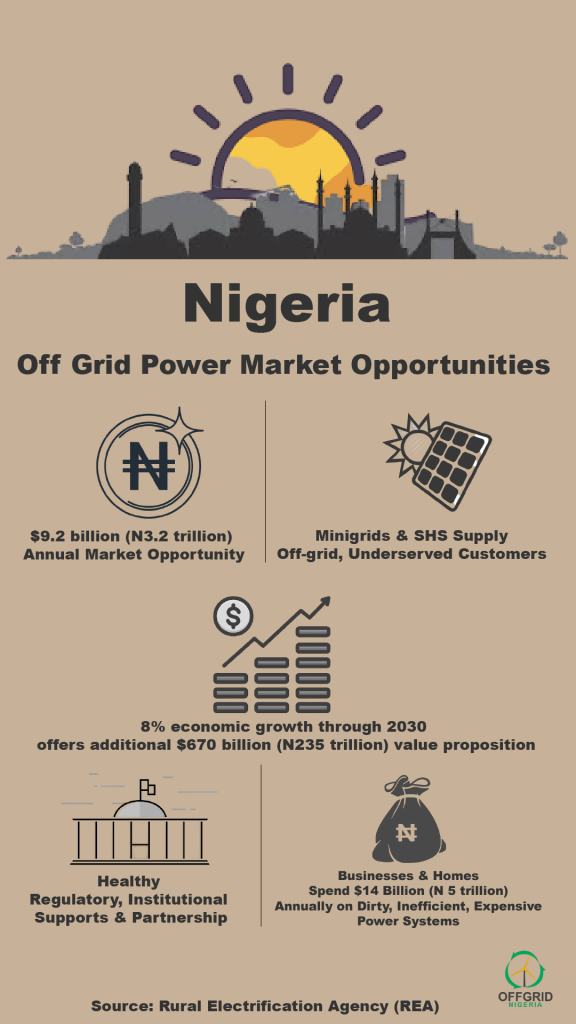With very huge industry expectations from the new mini grid regulation the Nigerian Electricity Regulatory Commission (NERC) just passed into law, the Nigeria Campaign Director for the global PowerForAll, Ify Malo, was clear and firm in listing out some of these expectations in an interview with OGN. Excerpts.
What does this mean for the electricity sector in Nigeria, specifically DRE which the Power for All advocates for as the best and perhaps the fastest way to electrify millions of Nigerians without electricity access?
I think that the finalization of the mini-grid regulation is a welcome development and will help shape Nigeria’s off-grid electricity sector going forward. It has been anticipated for about a year now and the regulation provides the necessary legislative framework required for the large scale deployment of decentralized mini-grids to advance electricity access to off-grid and underserved areas without having to wait for the grid network to extend to such areas thereby fast-tracking electricity provision nationwide.
Prior to this regulation, there is proof of concept and proof of technologies through several various successful pilot demonstrations of mini-grid technologies to show that it is one of the easiest and cost effective way to build out electricity infrastructure. What this regulation does is to make this a more certain and stable business, especially for investors who are able to commercialize and grow these solutions and serve the needs of millions of Nigerians who need electricity. We will definitely see increased electricity access at a faster rate in the coming years, and we are excited at the ripple effect this would have in other areas of development indicators.
The regulation permits for isolated and interconnected mini grid options, in your view, can this budding market raise the needed capital to do this?
The DRE sector is primarily private sector-driven and there are both local and foreign funds that can be accessed to finance this sector. Some of these funds have already been deployed in the successful pilot projects I previously mentioned which have proven their reliability and viability and will be utilized in financing them much further.
Currently, there are lots of foreign companies with access to finance looking to get into the sector, and we also have the Rural Electrification Fund (REF) which the Rural Electrification Agency (REA) is expected to utilize significantly in financing mini-grid solutions.
As the market grows and even at its current infancy, we also expect various large financial institutions such as the African Development Bank (AfDB); the Central Bank of Nigeria (CBN); the Bank of Industry (BOI), amongst others to provide various financial instruments for the sector. However, government would need to play a significant role in providing incentives such as tax holidays, import duty waivers amongst others to catalyze the sector and encourage further investments especially for the first set of commercial projects within the next few years.
This will be a major boost as we have seen how successful these incentives have been in other African countries especially East Africa. However, despite the influx of private sector financing, it is important that the government realizes that it has a critical role to play by removing barriers to accessing local capital in Nigeria which several foreign investors require as matching funds to meet the investment portfolio.
We also hope the government would give both practical and financial concessions that would ensure that mini-grid developments move fast, and that we dedicate some government funding to developing human capital in Nigeria to manage the operations and maintenance of the mini-grid systems. This is how we would build a sustainable business that aids development, promotes the economy through job growth and meets market needs at the same time.
The regulation also specifies that mini grid operators must charge tariff based on the MYTO model, would this make a fair commercial framework for the market to pivot?
The purpose of the MYTO is to set cost-reflective tariffs which will allow the power sector to be properly funded and functional. However between 2008 when it was first introduced, the model has been reviewed and modified severally to represent more realistic assumptions and estimates even though it recently faced some criticism with the country’s recession, spike in inflation and forex issues not reflecting true electricity costs.
The MYTO model sets prices that allow revenues to be made across the entire electricity value chain and in the case of mini-grids, the entire value chain is managed by the operator, so the MYTO model should be favourable for mini-grid operators. Also, the main economic inputs and variables used in the determination of tariffs in the MYTO model depend on the level of Aggregate Technical Commercial and Collection (ATC&C) losses of energy which fortunately we are not charged for.
Therefore, I expect the MYTO model if well designed for the mini-grid sector to be a fair commercial framework for mini-grids. This might not be the case in the immediate term, because this is a specific sub-sector serving the most hard to reach communities and communities with lower income and economic variables. So, a one-size-fits-all MYTO regime might not work because communities to be served from East, to West, to North and to South are quite different in their range of economic opportunities and development indicators. However, as the DRE sector grows, in a few years we will be able to tell if the MYTO model is suitable for the sector or if a new model needs to be introduced. Like I previously mentioned, there is a need for government incentives at this stage of the market to help catalyze and grow the market as quickly as possible.





